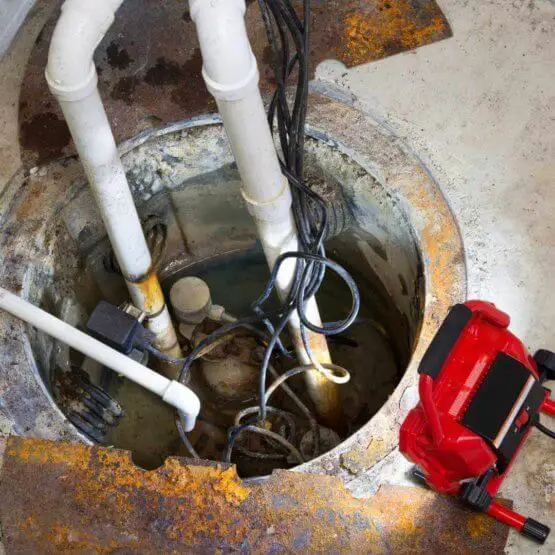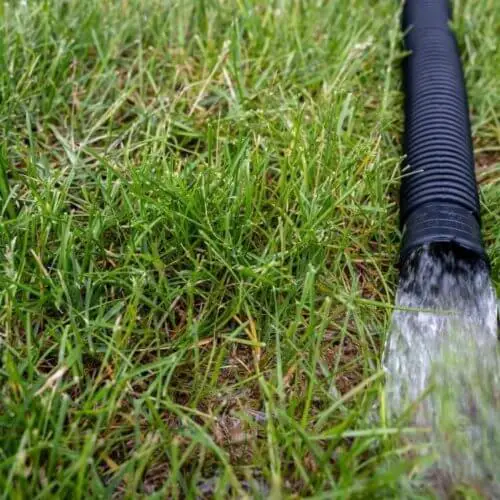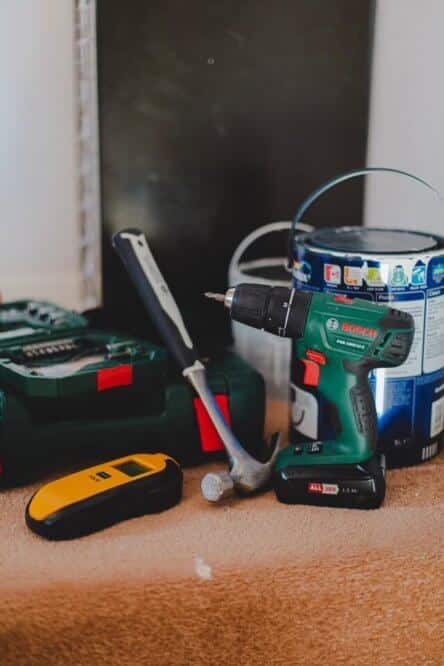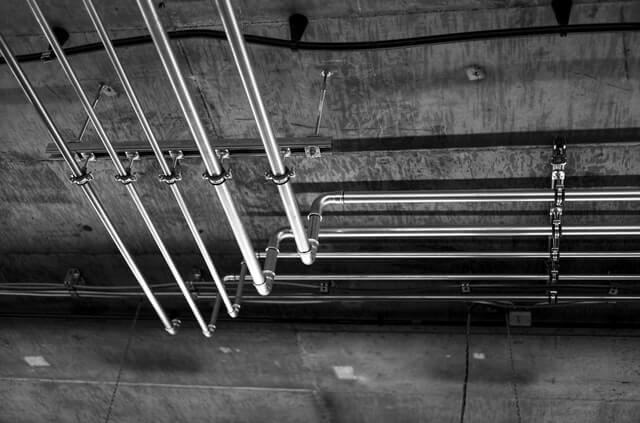The sump pit is a great way of preventing issues with water accumulating in our basement. This accumulated water can lead to a slew of problems if not dealt with, which is why our sump pit, in combination with the sump pump, is vital to the health of our household. However, we will often be left with many questions around it. This includes ones tied to constant water flow into sump pit.
How does water get into sump pit?

A lot of different things control the flow of water throughout our home. Our plumbing directs water that enters our home towards the sump pit and other disposal systems. There are different ways to reach the sump pit so let’s take a look at it.
Through drains
One of the most common ways to get the water into the sump pit is through different drains. Whether these trains are located within the edges of our household or within the household itself doesn’t matter.
There will be situations where surface drains are utilized, reducing surface water problems that could occur within the basement or bathrooms. These drains are a straightforward way to redirect water towards the sump pit.
However, as you may assume, these drains aren’t the most reliable or driest of ways to get water flowing directly into the sump pit. In addition, surface drains may still leave the vicinity they abide in damp which can cause some issues over time still.
Migration through soil
This is another way that water can reach our sump pit. Because the water travels through paths with the least resistance, it can soak deep into the soil and reach our foundation. Those who have a basement will likely experience this water seeping into it.
While this can usually cause trouble, the sump pit should collect most of that water. Due to the sump pit always being under a slight slope, water will flow into it swiftly.
Excess water from the soil is a frequent problem for those who live in areas with heavy rains, be they consistent or seasonal. These sudden bursts of water can often overwhelm other forms of defense our home has. The heavy rain could even cause issues to a sump pit if it isn’t deep enough or installed correctly, leading to moisture in the basement.
Weeping tile
Another source that will fill up our sump pit is a weeping tile. This is a porous pipe that can be used to collect water underground and discharge it. The water it’ll usually contain is that close to our foundation, making it useful to prevent external water damage. Instead, weeping tile will pour water into the sump pit, which pumps it out.
The pipe itself is usually a corrugated plastic pipe that has slits in it. These slits are referred to as weep holes, hence the item’s name. It’s a great piece of basement waterproofing that works well with a sump pit. [1]
Constant water flow into sump pit
We’ve seen multiple different sources that can get water into our sump pit, but it’s also important to keep in mind how constant water flow within our sump pit can affect the whole system.
Sump pump runs every 10 seconds

The frequency of our sump pump running can be disturbing. It’s not unreasonable to be worried when your sump pump is consistently pumping water out, doubly so when this frequency continues for an extended period of time.
What causes it?
Multiple different issues can cause our sump pit to have water constantly flow through it. The issues we face may come from different parts of the system, but they will all result in similar side-effects. [3]
High water table sump pump
The cause of the frequent expulsions from a sump pump are many. The first and most common one is that the sump pump is below the water table. The water table tells you what level the water rests in the ground.
When the water table is higher than the floor of your basement, which is something that often occurs during rain or other natural causes, the water can easily enter the household. It will end up in the sump pit, making the sump pump work frequently.
If the sump pump is consistently working at a high frequency, the natural water table may be higher than your basement floor.
Float switch jammed
Your float switch could be jammed too. The sump pump will keep continuously working because it’s stuck in operational mode. The jamming can occur in the most mundane situations, but it’s always best to follow the connected elements and make sure none of them are causing the jam. [4]
Negative drainage
Lastly, we should note that you could get into a negative drainage situation. This occurs when the slope around your home is tilted towards your home. That means all the water you are expunging is coming right back at you, leading the sump pump to expel it again. Water keeps going in circles which wastes time and keeps the sump pump on.
How do I fix it?
The solutions to these issues are pretty straightforward overall. The first thing to do is inspect the system. By doing so, you gather important info that will be useful later.
The problem of a jammed float switch should become apparent during an inspection of a sump pump. However, the resolution will require some action. Considering the number of possible problems, we suggest dealing with them on a case-by-case basis. Removing obstructing debris that may be triggering the float switch, cords that are wrapping around it, and other such actions may be just what you need.
The issue of high water tables is something your inspection will also help with. It depends on the actual height difference of the water tables, but the problem can often be resolved by changing the altitude of the pump by a few inches. Otherwise, it would be best to take extra action with trained professionals to mitigate this issue.
Negative drainage is a problem that proper actions can prevent preemptively. The slope around our home can cause plentiful flooding problems if we don’t ensure that it leads away from our home. Certain landscaping practices can also resolve this problem. You can implement other draining and dispersal elements if that’s not on the table.
Why do i hear water running in my sump pump?

While the sump pump is expected to operate and have water flowing through it, some noises can still cause concern. This usually comes in the form of hearing water run through the sump pump.
A sump pump may be experiencing some problems if the sound of running water is familiar enough. This sound may indicate that the sump pump’s automatic systems aren’t properly configured. Specifically, this refers to the system it utilizes to turn itself off automatically when the water level is on the lower end. When this issue occurs, it is possible to hear odd noises like sump pump’s struggling to suck out water from the pit.
The height issues will usually result in a slurping sound that may be reminiscent of somebody trying to suck things up through a straw. When hearing this noise, it’s best to get acquainted with the sump pump and see what’s not working well there.
A sound of continuous running water may be one of size. When you have an oversized or undersized sump pump, the sound of it working and water going through it may last far longer than expected. With undersized ones, it’s relatively straightforward. The sump pump isn’t powerful enough to expunge the present water out, taking far longer and thus giving off the feeling that water is constantly flowing through our pump.
With an oversized pump, we’ll run into the issue where the sump pit is too small. This will lead to the sump pump being far easier to trigger as the overlong pump will need to be lowered deeper into the sump pit to be accommodated. There, it will proceed to constantly suck out water even when it’s at the floor level of the pit.
Constant water flow into sump pit
The constant water flow is another reason why you may hear the sound of water running in your sump pump. If the constant water flow occurs within our pit, the sump pump will get triggered and pump water out. The water will flow through the sump pump and cause the sound of running water. Resolving issues of constant water flow within your sump pit is the best way to prevent other sump pump problems mentioned above.
No water is going in sump pump pit
While the constant flow of water within our sump pit can cause issues, so can the lack of water inside the sump pit. Of course, it’s expected that the sump pump will expel the water outside of our home and disperse it safely throughout the yard. However, there should still be a bit of water left to signify the pit filling up. The situation where there is no water in the sump pit can sometimes be attributed to poor installation. The drainage system may be the one that’s badly installed or the sump pump itself isn’t operating well.
Clogged weeping tile
One of the more specific issues you may run into is a clogged weeping tile. This will prevent the water from flowing properly into the sump pit and could result in sediment issues within the drain tile. When it works properly, weeping tile diverts water into the sump pit, while a poorly implemented or malfunctioning one will have water slosh back and forth.
Improperly installed sump pump
The improper installation of the sump pump ties back to your sump pump’s height not being good. If the sump pump is installed too low into the sump pit, it will start working way too much and expunging every little bit of water.
Make sure to modify the height and check whether the trigger on the sump pump is properly configured. In cases where it isn’t, it’s pretty common to run into problems of the sump pump not turning off after maintaining the water level, leading to excess work that’ll leave the sump pit with no water. It’s important to pay proper attention to these details, improper installation is one of the most common causes of sump pump issues.
How much water should be in my sump pump pit
 Everybody should know that it’s normal to have some water within your sump pit. The sump pump doesn’t trigger for just any little bit of water. It would constantly be operating if it did, like in situations we mentioned before. The water in the sump pit needs to rise above a certain threshold in order to trigger the sump pump’s float switch.
Everybody should know that it’s normal to have some water within your sump pit. The sump pump doesn’t trigger for just any little bit of water. It would constantly be operating if it did, like in situations we mentioned before. The water in the sump pit needs to rise above a certain threshold in order to trigger the sump pump’s float switch.
So the question now becomes, how much water should be in the sump pit? Usually, this will depend on the pit. The smaller pit will often fill up quickly and have their sump pumps triggered easily. The bigger ones will be harder to trigger. The regular depth of 30 inches gives some leeway to sump pits before their sump pumps start working.
You want to keep the water level at a point that’s at least 6 inches below the surface. You also want to make sure that the water level doesn’t stay too far above your weeping tile. It could stop the water within the tile from moving if it does. This can result in sediment and a whole lot of headaches about cleansing the weeping tile. Check how high your resting water level is. If you feel it’s a bit too high, it may be smart to try and lower the sump pump’s operational height.
Changing the height at which your sump pump operates could cause a situation where it’s constantly working. Be wary of how low you put the pump and how frequently your pet gets to an uncomfortable level. Depending on the circumstances, the issue may be snappy enough to resolve or far more troublesome than you initially assumed. [7]
Conclusion
The prominent problem of constant water flow within your sump pit can stem from myriad problems. We’ve laid out some of the most common and persistent ones, resolving of which should help your entire home become drier. The weird and similar effects that may occur within our homes should also be considered.
All of this culminates in one thing, a better sump pit system with properly installed drains and backup sump pump as well. This will prevent water damage and help you have some peace of mind.

Michael Davis is a heating & plumbing expert who currently works as independent contractor in SC. He also writes for Plumbertip.
For almost 10 years he worked on various plumbing tasks across South Carolina.


